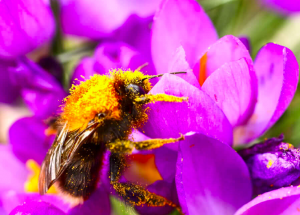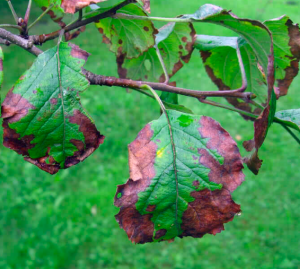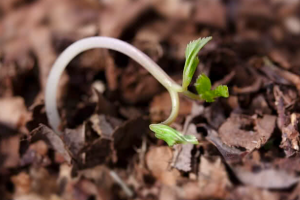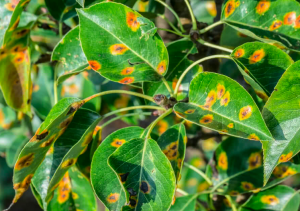No products in the cart.
Gardeners Guide for Monsoon Season Leave a comment
Gardeners Guide for Monsoon Season
Monsoon is a joyous time of the year for those who love gardening and wish to see their plants grow fast and bloom. If you have a passion for gardening, then there is no better time to do it than in the monsoons. Monsoon season is also considered a kind of tonic for gardening. The rains bring a wealth of life-giving nutrients to plants. It also contains beneficial microorganisms which enhance plant growth. The solubilized nutrients also influence the colour of foliage. Rain water does have real benefits for plants. Therefore, it is rightly said, to a gardener, rain is generally a welcome blessing.
Monsoon is also considered to be the best time for planting due to the low temperature and humidity. They provide potential growth to the roots. During monsoon indoor plants can absorb the humidity in the air and get rid of the excess sunlight that they have in the summer season.
However, excess of anything is bad, excessive rain on plants can cause plenty of trouble in the garden. Overly wet weather causes diseases via bacterial and fungal pathogens fostered by long-term moisture on foliage and root systems. Excessive water also promotes disease often evidenced in stunting, spots on foliage, decay on leaves, stems, or fruit, wilting, and, in severe cases, death of the entire plant. Extreme wet weather also keeps pollinators at bay affecting bloom and fruiting.
Here are some common monsoon diseases that one should be aware of:-
- Disappearing Pollinators
During the rainy season, active pollinators like bees and birds start to disappear. Some plants even experience a slow blooming season.
Treatment
Provide the plants with all the essential nutrients and fertilizers that are required for their growth.

- Powdery Mildew
This is one of the most common diseases during the rainy season. The plants seem to develop a powdery residue on the leaf surfaces and infect new and old foliage in the beginning and eventually, the leaves begin to wither and fall off prematurely. Sometimes, this disease can even develop in the absence of moisture. The wind carries powdery mildew spores and can germinate even in the absence of moisture.
Treatment
Sunlight and heat kill off this fungus. Application of neem oil, sulphur, bicarbonates, organic fungicides along with synthetic fungicides with Bacillus subtilis or synthetic fungicides to the plant’s surface.

- Anthracnose
These fungi spread during the monsoon and mainly affect the evergreen and deciduous plants. It starts during overly wet seasons and usually begins on lower branches, gradually spreading up the tree. Also called leaf blight, anthracnose appears as dark lesions on leaves, stems, flowers, and fruit with premature leaf drops.
Treatments
To combat this fungus, dispose of tree detritus during the growing season and fall. Prune in the winter to increase airflow and remove infected limbs. Fungicidal sprays can also work.
- Fire Blight
Fire blight is a bacterial disease that affects fruit trees, such as pears and apples. Symptoms are similar to any other blight disease, characterised by premature fruit drop.
Treatment:- Application of fungicides

- Damping off of Seedlings
This disease is caused by fungal organisms which are present in the soil. The seedlings raised in nurseries, especially those with the addition of a higher quantity of organic manures facilitate the spread of infection. The symptoms are severe when the moisture content of the soil is high. The disease spreads rapidly if adequate persuasions to control it are not taken.
Treatment
Sow the flower seeds on a raised seedbed with good drainage.
Sterilise the soil of the seedbed by burning the trash. Drench with 0.35 % copper oxychloride on noticing the first symptom of wilting.

- Phytophthora Die-back
This is a common disease that affects citrus fruits, roses and Geraniums. It is caused due to infection by certain fungal organisms at the root region. The symptoms are drying up of the margin of the younger leaves. The drying that appears like burning slowly spreads to young in severe cases.
Treatment
Prune all the wilted and dry twigs 2 cm to 5 cm (1.2 inches) below the infected region. Apply a thick paste of copper oxychloride at the cut ends.

- Leaf spots
This disease is prevalent in a large number of fruits, vegetables and ornamental plants. Some fungi and bacteria cause leaf spots which vary in size, shape, colour and the extent of the damage. The symptoms vary from the pink head-like dark brown isolated irregular spots to large dark brown concentric circles.
Treatment
Spraying of fungicides repeatedly two to three times at fortnightly intervals during the growth period of a plant.

- Soggy and Mushy leaves of Succulents
One of the most common problems seen in succulents during the rainy season is mushy and soggy leaves followed by a certain amount of yellowing. Overwatering may be an issue with some species and can cause the leaves to turn mushy. Succulents prefer their potting mix to dry out between watering and do not prefer to constantly sit in water. If proper care is not taken this might also invite other problems such as infestation by pests such as aphids, mealy bugs, caterpillars and fungal diseases.
Treatment
Succulents may need to be kept out of the rain and strictly watered only when the potting mixture dries out. Foliage should also be kept dry. As, most succulents cannot bear much humidity and as a result can suffer yellowing of leaves, brown spots and fungal diseases as well.

Precautions to be taken while gardening in Monsoon
- Shift your plants to a shaded area or else cover your plants with a green net. By doing so, air and water both keep on passing through this net and plants will get rainwater too.
- Shift Succulents inside the home
Shift all the succulents inside the home because succulents already have the optimum level of water stored inside them. They do not need much water. Some succulents are Aloe Vera, Jade plant, Echeveria etc.
- Soil should be well-drained
In in-ground gardening, there would not be any problem with overwatering because the soil keeps on absorbing the water. But, in the case of a potted plant, the soil should be well-drained as pots do not have that much capability of holding water. To avoid overwatering, your pot and soil should be well-drained. If water is entering from the top, then it should be able to drain out from the bottom. Water should not remain inside the pot at all.
- Fill the pot with the soil
While filling the soil in the pot, fill it completely. Do not leave any space on the top, normally we leave 2-3 inches of space. During heavy rain, water remains on the top of the soil and it might lead to fungus and green algae on the top of the soil.
- Keeping a check on the bottom hole of the pot
Check the functionality of the bottom hole properly. If water is not coming out from the bottom of the pot, then there are no benefits to well-drained soil. Sometimes roots or any other things might get obstructed inside these holes due to which water would get logged. Give water to the plant till the water comes out from the bottom hole.
- Remove the plates from the bottom of the pots
Generally, we keep the pots on the plates so that our land surface does not get stained but in the rainy season we need to remove them. As, they might get flooded with water.
- Raise the level of plants
During the rainy season, keep the plants on some stands so that water could come out easily.
- Give support to your plants
During the rainy season sometimes the wind blows very fast. Due to heavy rain, the soil gets wet and with this plants are more likely to fall. So, it is very important to provide some support to our plants so that they can stand easily during heavy winds also.
- Remove bottom leaves
The bottom leaves do not play role in photosynthesis. Kindly, remove the bottom leaves of the plants while doing soft pruning or when you are filling the pot with soil. This is necessary to do because bottom leaves might get infected with fungus when they get continuously in contact with the wet soil.
- Planting with Cuttings
During monsoon, temperature, humidity and moisture everything is so perfect that you can grow plants with their cuttings also. Cutting of the plants will grow properly and very easily in the monsoon season.
- Use of Fertilizer
Try to switch on to organic fertilizers such as neem cake as fertilizer before rain starts, it will act as a prevention for problems like fungus and insects. Moreover, rainwater has a good level of nitrogen, so there is no need for any other fertilizer.
- Use of Fungicides and Pesticides
In the rainy season spraying neem liquid or oil on weekly basis keeps plants healthy and prevents them from fungus and pest attacks. One can also use neem soap solution, cinnamon powder and cinnamon liquid solution during the rainy season.
- Taking care of Indoor Plants
Due to high humidity, the soil of indoor plants stays wet for a longer duration. Be cautious while watering indoor plants as overwatering will cause white fungus on the top layer of the soil. To remove white fungus, simply remove it and add cinnamon powder to the soil. It is important to maintain ventilation for indoor plants. So, for some time open the gates and windows for your indoor plants.
How to Garden in Wet Ground and Prevent Disease
As rightly said prevention is the key to disease management during rainy seasons. Here are a few measures that can be taken to prevent diseases.
- Sanitation is the number one cultural technique to manage or prevent disease. Remove and burn any diseased leaves or fruit from not only the plant but from the surrounding ground as well.
- Select those plants that are resistant to disease and place them on high ground to prevent root rot. Plant only those that thrive in wet environments and avoid those that are native to drier regions.
- The disease spreads easily from plant to plant when leaves are wet, so avoid pruning or harvesting until the foliage has dried off. Prune the plants to improve aeration and increase dry time after heavy rainfall.
- Improve soil drainage if it is lacking and plant in raised beds or mounds. Remove any infected plant parts as soon as you see them. Remember to sanitize the pruners before moving on to other plants so you don’t spread the disease.
- A fungicide may be applied either before or early in the development of the disease.


